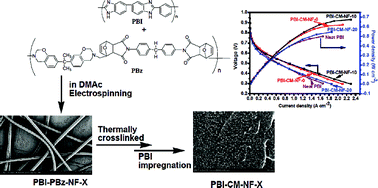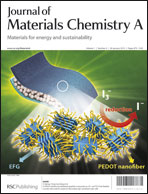Polyelectrolyte composite membranes of polybenzimidazole and crosslinked polybenzimidazole-polybenzoxazine electrospun nanofibers for proton exchange membrane fuel cells
Abstract
Polybenzoxazine (PBz)-modified polybenzimidazole (PBI) nanofibers have been prepared by an electrospinning process. The nanofibers have been crosslinked through the ring-opening addition reaction of the benzoxazine groups of PBz. The crosslinked PBI nanofibers show an enhancement in mechanical strength and an increase in resistance to


 Please wait while we load your content...
Please wait while we load your content...